Moles
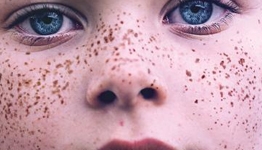
Occasionally, a mole may be a cancerous growth. Therefore, it’s best to get medical advice if you notice a mole that does not follow the normal pattern. A dermatologist may be able to assure you that the mole is harmless. To accomplish this, he or she may wish to study a sample of it under a microscope for an accurate diagnosis.
The dermatologist will remove the mole, or part of it, so that thin sections from the tissue can be examined under a microscope. This is a simple and harmless procedure. Even if the lesion in question is a cancer, cutting through it will not cause the cancer to spread. If the growth was only partially removed and it is found to be cancerous, the entire lesion and a margin of safety will need to be removed.
A person may wish to get rid of a mole simply because it is annoying or unattractive. The most common methods of removal include numbing the spot and then removing the mole by shave excision or, for some moles, cutting out the entire lesion and stitching the area closed.
Most procedures used to remove moles take only a short time and can be performed in a dermatologist’s office. Usually a mole will not return once it has been removed. If it does begin to reappear, the patient should see the doctor.
More About Moles
Many people wonder if it is safe to shave over a mole. Medical studies show that irritation such as shaving will not cause a mole to become cancerous. A person might want to have moles in the beard area removed because they are annoying.
Some moles contain hairs, which a person may consider unattractive. The hairs can be clipped close to the skin’s surface, or a dermatologist can remove these hairs permanently.
Another way to make a mole less conspicuous is to disguise it with makeup. Cosmetics specifically designed to cover blemishes provide more complete coverage than do ordinary cosmetics.
Most moles cause few problems. But occasionally a mole may be unattractive, annoying or changing. If you see any signs of change, or want a mole to be removed for cosmetic reasons, consult your dermatologist.
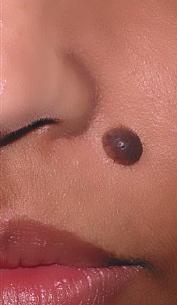
Everyone has moles, sometimes 40 or more. Most people think of a mole as being a dark brown spot, but moles have a much wider range of appearance.
At one time, a mole in a strategic spot on the cheek of a woman, was considered fashionable. Some were even painted on. These were called “beauty marks.” However, not all moles are beautiful. They can be raised from the skin and very noticeable, or they may contain dark hairs.
Moles can appear anywhere on the skin, alone or in groups. They are usually brown in colour and can be various sizes and shapes. The brown colour is caused by special cells that make the pigment melanin.
Moles probably are determined before a person is born. Most appear during the first 20 years of a person’s life, although some may not appear until later in life.
Each mole has its own growth pattern. At first, moles are flat and brown or black in colour, like a freckle. Over time, they usually enlarge and some may develop hairs. As the years pass, moles usually change slowly, becoming raised and lighter in colour. Some will not change at all. Most moles will slowly disappear, seeming to fade away. Others will become raised so far from the skin that they develop a small “stalk” and eventually fall off or are rubbed off.
This is the typical life cycle of the common mole. These changes occur slowly since the life cycle of the average mole is about 50 years.
Moles may darken,” which can happen after exposure to the sun. During the teen years and pregnancy, moles tend to become darker and larger and new ones may appear.
Different Types of Moles
Recent studies have shown that certain types of moles have a higher,than-average risk of becoming cancerous. Some may develop into a form of skin cancer known as malignant melanoma. Sunburns may increase the risk of melanoma.
Moles that appear at birth occur in about one in hundred people. They are called Congenital nevi. These moles may be more likely to develop into melanoma than moles which appear after birth. When a congenital nevus is more than eight inches in diameter, it poses the greatest risk.
Moles known as dysplastic nevi or atypical moles are larger than average (usually larger than a pencil eraser) and irregular in shape. They tend to have uneven colour with dark brown centres and lighter, uneven edges. These moles tend to be hereditary.
Persons with dysplastic nevi may have a greater-than-average chance of developing malignant melanoma. These people should be checked by a dermatologist to detect any changes that might indicate skin cancer.
Recognizing the early warning signs of malignant melanoma is important. Remember the ABCDs of melanoma when examining your moles.
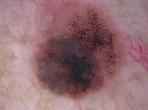 A stands for ASYMMETRY, when one half of the mole doesn’t match the other half.
A stands for ASYMMETRY, when one half of the mole doesn’t match the other half.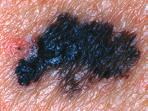 B stands for BORDER, when the border or edges of the mole are ragged, blurred or irregular.
B stands for BORDER, when the border or edges of the mole are ragged, blurred or irregular.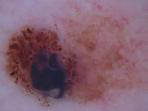 C stands for COLOUR, when the colour of the mole is not the same throughoutnor if it has shades of tan, brown, black,red, white or blue.
C stands for COLOUR, when the colour of the mole is not the same throughoutnor if it has shades of tan, brown, black,red, white or blue.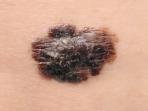 D stands for DIAMETER, if the diameter of a mole is larger than the eraser of a pencil.
D stands for DIAMETER, if the diameter of a mole is larger than the eraser of a pencil.
If a mole displays any of these signs, it should be checked immediately by a dermatologist.
Many people have flat moles. These moles are rarely cancerous. It’s important to remember that not all moles look alike. They may be skin coloured or pink, light tan to brown, and even blue-black. They may be round or oval, or their shape may be irregular. They may be flat or raised, large or small, with or without hairs, mottled or evenly coloured. If the appearance of a mole worries you or if it changes suddenly in any way, you should consult a dermatologist.
Other Pigmented Patches on the Skin
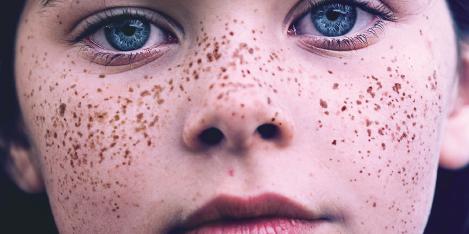
If you look closely at your skin, you may notice darkened spots that are not moles. Freckles are the most common of these spots. Unlike moles, they are rarely larger than the size of a pea, although sometimes they may seem to be because
they blend into one another. Sun exposure may make freckles darker and they may fade completely in the winter. While moles may appear anywhere on the skin, freckles ordinarily are limited to sun exposed areas, such as the face, neck and upper back. Blondes and redheads freckle most easily.
After a person reaches middle age, he or she may acquire other dark areas that are not moles. The brown, wart-like growths that appear on the face or trunk and look as if they have been stuck to the skin may be seborrheic keratoses.
Multiple small gray-brown spots that may appear on wrists, backs of the hands, forearms, and face could be actinic lentigines. These are also called “liver spots” or “age spots.” Both actinic lentigines and seborrheic keratosis are easily diagnosed by your dermatologist and are not cancerous.
Medical Treatment of Moles
The majority of moles and other blemishes are benign (noncancerous). They will never be a threat to the health of the person who has them. The only spots or blemishes that warrant medical concern are those that do something out of the ordinary - those that act differently from other existing moles. This includes any spot that suddenly changes in size, shape or colour or one that bleeds, itches, becomes painful, or first appears when a person is past his twenties.



